As a resident of Florida, I felt an obligation to go see the Everglades. I had lived in the state more than ten years, but had never made the trip down the peninsula to see this unique natural treasure, the only wetland of its kind in the world. I decided to make a quick visit — to drive in and out of the park on its one and only road: the 40-mile scenic drive that runs from just outside of Florida City to Flamingo.
Royal Palm will likely be your first stop, as you enter Everglades National Park. This stop offers two trails: a boardwalk through swampland, and a trail through the forest.
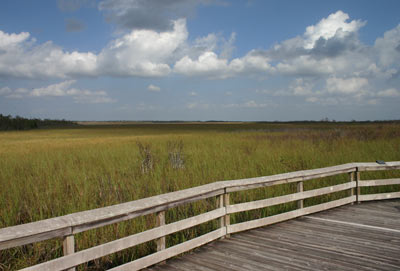
The wetland trail is probably the more interesting of the two, since you’re almost guaranteed to see alligators and a few wading birds.
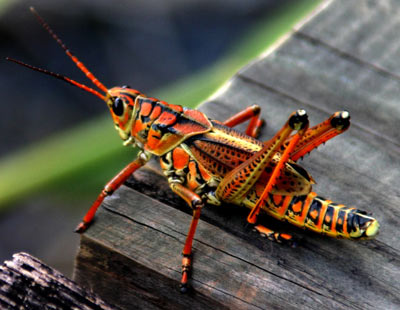
I didn’t stop at Royal Palm on this trip, because I had stopped here before, in 2005. During that visit to the Everglades, hurricane Wilma had just swamped the area, and most of the park was flooded. Royal Palm was the only area still open to the public. These pictures were taken at Royal Palm back then.
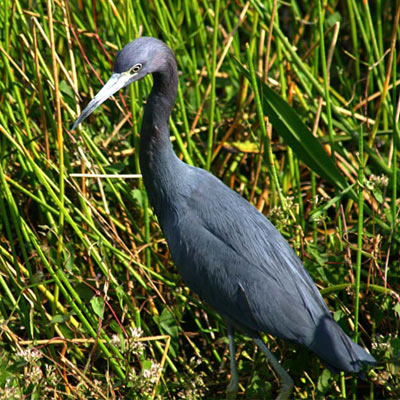
Pinelands
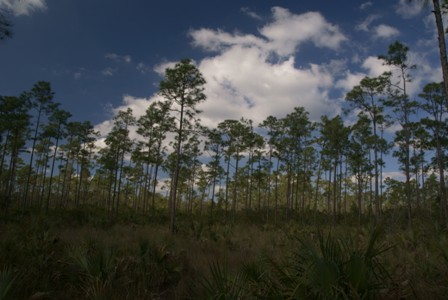
My first stop was at Pinelands, a trail that passes through a stand of pine trees, and skirts the edge of a hardwood hammock — a slightly higher area of land, which allows hardwood trees to survive.
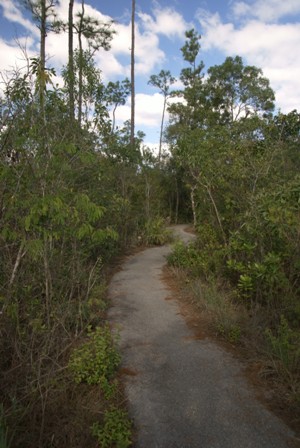
The trail is about 4/10 of a mile, and you can knock it out in about 15 minutes or less, unless you want to spend a lot of time scouring the trees for wildlife.
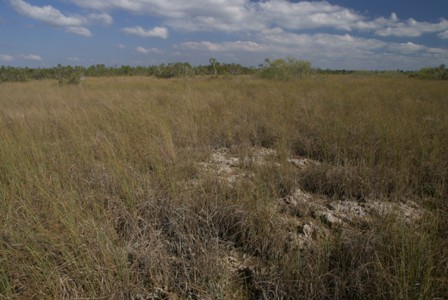
On down the road a short distance, there’s a turnout that allows you to view some of the rocks that are mixed in with the lower-lying wetland. These limestone rocks are called “pinnacle rock”. Water slowly dissolves the limestone, forming “solution holes”, essentially potholes, where water gets trapped, creating a micro-sized environment for small fish, snails, and insect larvae.
The pinnacle rock is a sign that you’re getting close…
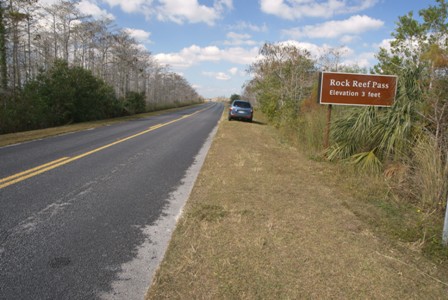
… to Rock Reef Pass. Of all the mountain passes I’ve driven across, this one is by far the lowest: Rock Reef Pass is only 3 feet above sea level. Try not to burn out your breaks as you head downhill from here!
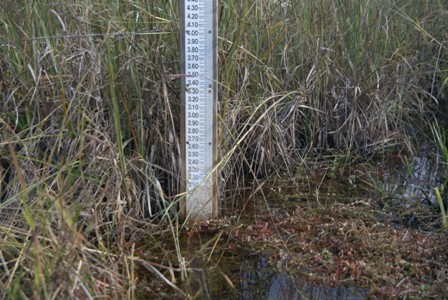
Next to the road sign, there’s a yardstick, that shows the height of the surrounding water.
Bald Cypress
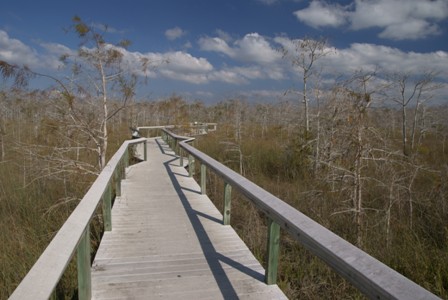
At the Bald Cypress trail, you can walk along a boardwalk through a skeleton forest. During the winter, these fully-grown, yet tiny cypress trees appear to be dead.
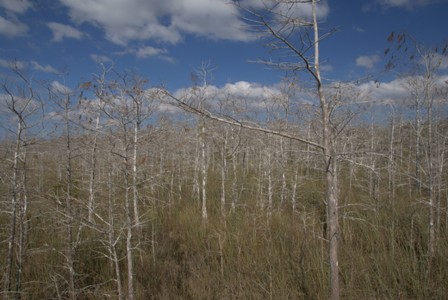
The boardwalk only takes you a hundred feet or so off the road, so it’s a short walk to the end and back.
Pa-hay-okee Overlook
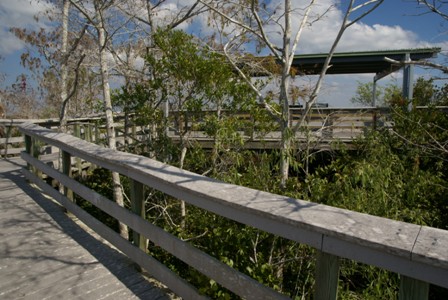
The Pa-hay-okee trail leads to an observation platform, that lifts you into the treetops. Pa-hay-okee is on the border…
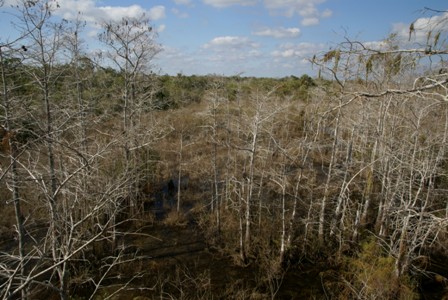
… between a stand of cypress…
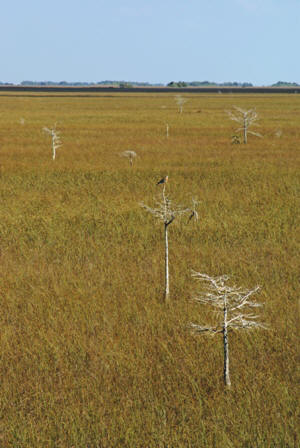
… and a vast, open grassland.
Mahogany Hammock
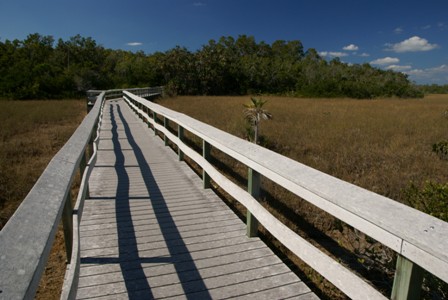
As you drive through the Everglades, you’ll notice islands of trees. These “islands” are spots where the land is slightly higher, and therefore slightly more dry, allowing trees to survive. The Mahogany Hammock trail takes you…
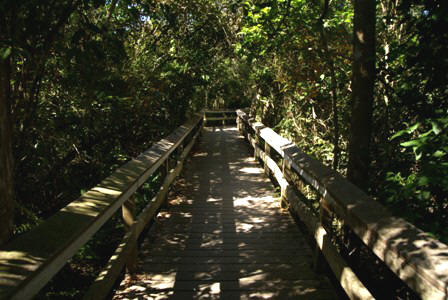
… into one of those thick forests…
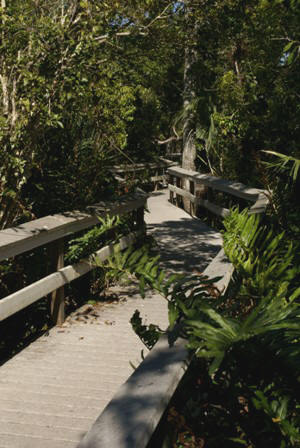
… on a boardwalk the entire way.
Paurotis Pond
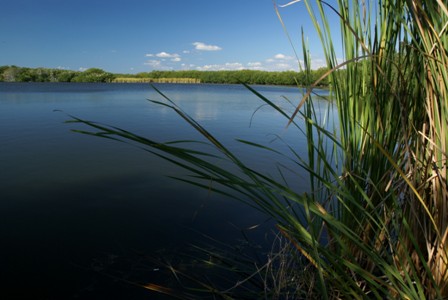
The water is delightfully blue at Paurotis Pond. This is one of the first of many ponds near the highway, as you approach the southern end of the park.
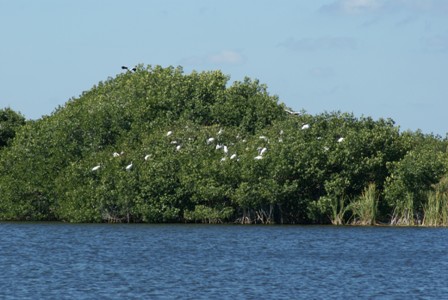
This was a popular spot with water birds — dozens of them were lounging in the trees on the other side of the lake.
West Lake
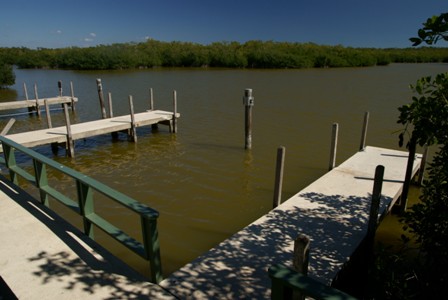
West Lake is one of the larger lakes along the scenic Everglades highway. It’s also the start of the West Lake Canoe Trail, which runs along the southern edge of the lake, then connects with several other, smaller lakes before ending at a camping area. There’s also a restroom and a picnic shelter here, but the two are too close to one another — so you might not want to eat here (although some people were having a picnic amidst the rest-room odor– yuck!).
Unfortunately, I didn’t have a canoe with me, but I did have a bicycle — and it came in handy at:
Snake Bight Bicycle/Hiking Trail
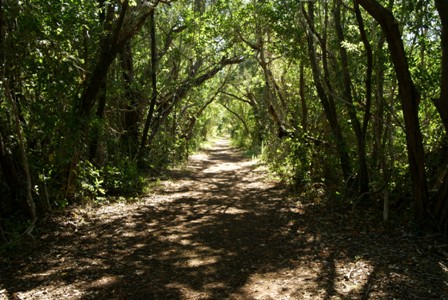
The Snake Bight Trail is an old dirt road that runs directly south to a small bay called Snake Bight. A “bight” is a recessed, curved area along a coastline or bay — but the double meaning of the trail still works, since I’m sure there were a few snakes lurking nearby, that wouldn’t have minded biting me.
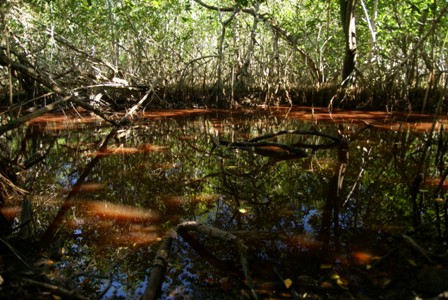
The dirt road trail is just elevated enough to keep it dry. On either side of the trail, there’s murky, scary-looking water, and probably a few creatures too. Surprisingly, I didn’t see any alligators here, or anywhere else in the Everglades — although I saw a few in the Big Cypress National Preserve, north of Everglades National Park on US 41.
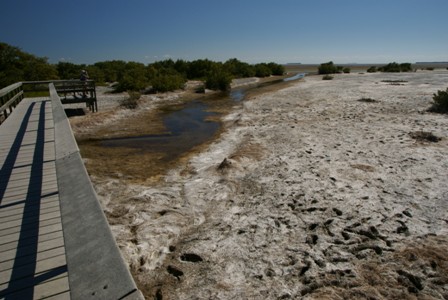
At the end of the Snake Bight trail, the path becomes a boardwalk, and emerges from the swampy forest.
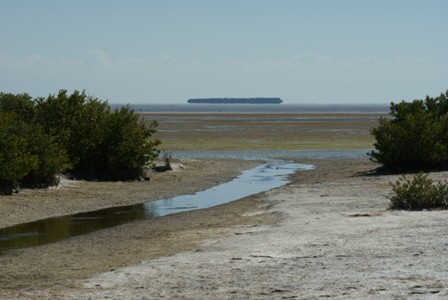
At the end, there’s a view of Florida Bay, the shallow lagoon between the Florida mainland and the Florida Keys. You can also see one of the more than 200 mangrove islands that are scattered throughout the bay.
Flamingo
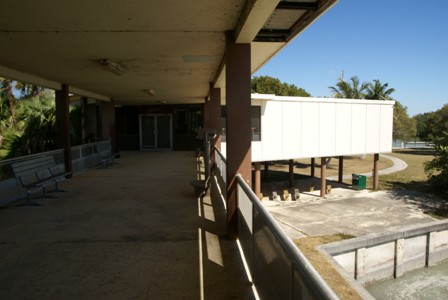
The settlement of Flamingo marks the end of the road. Thanks to the 2005 hurricane season, there isn’t much here, except a really ugly visitor center…
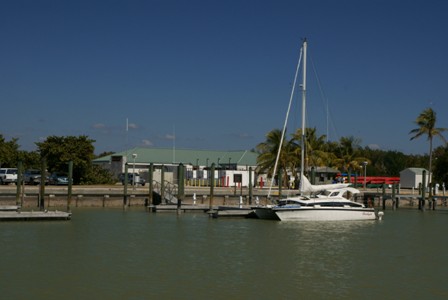
… and a more attractive marina with boat docks.
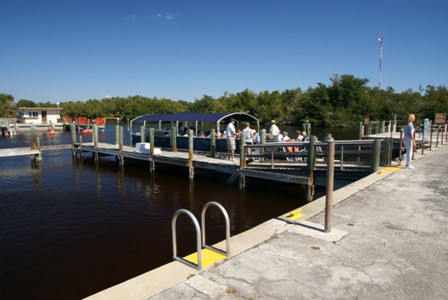
You can buy tickets in the marina for a scenic boat tour. The NPS recommends you call 239-695-3101 for updated tour and fare information.
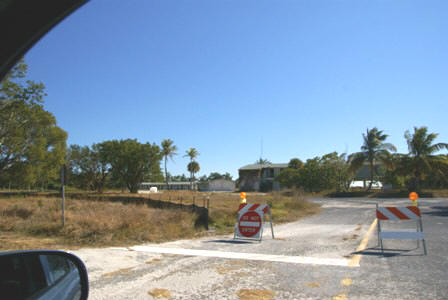
Hurricanes Katrina and Wilma devastated the southern tip of the Everglades. Before the storms, there was a lodge and restaurant here, now only their concrete skeletons remain. My visit was more than three years after those storms, and very little had been done to restore Flamingo to its previous state — which made the end-of-the-road destination somewhat depressing.
Also depressing: once you get to Flamingo, there’s only one way out: the exact same road you just drove down. Take it slow, and try to enjoy the scenery as you make the hour-long drive back to civilization. Oh wait, I’m not sure you can call Florida City civilization!

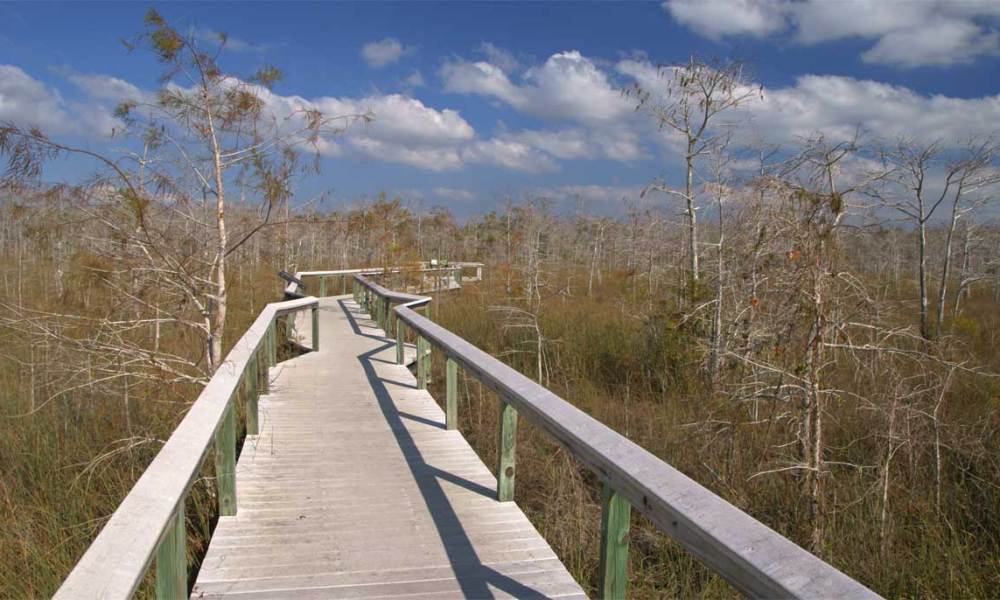
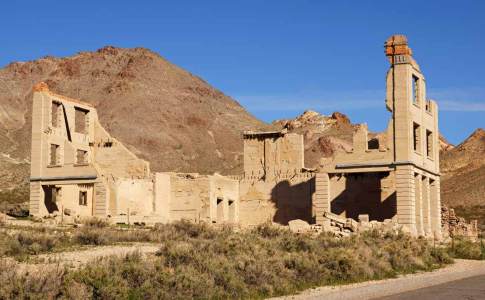
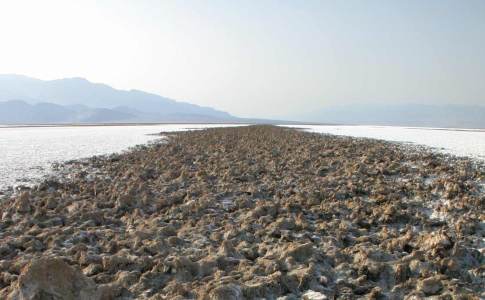
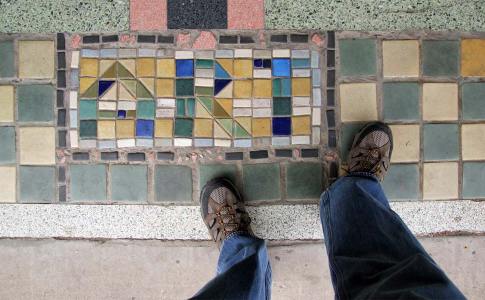
No comments